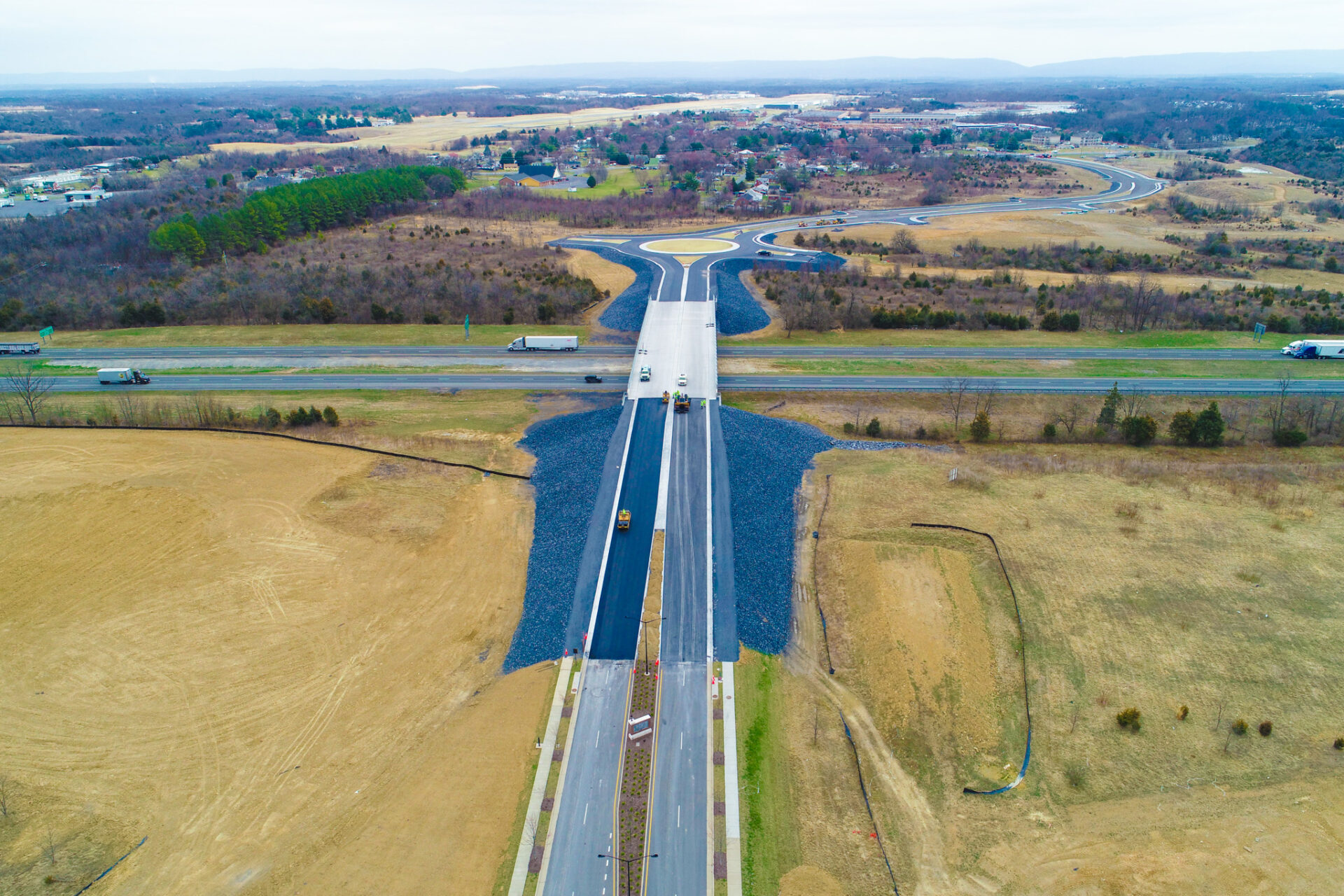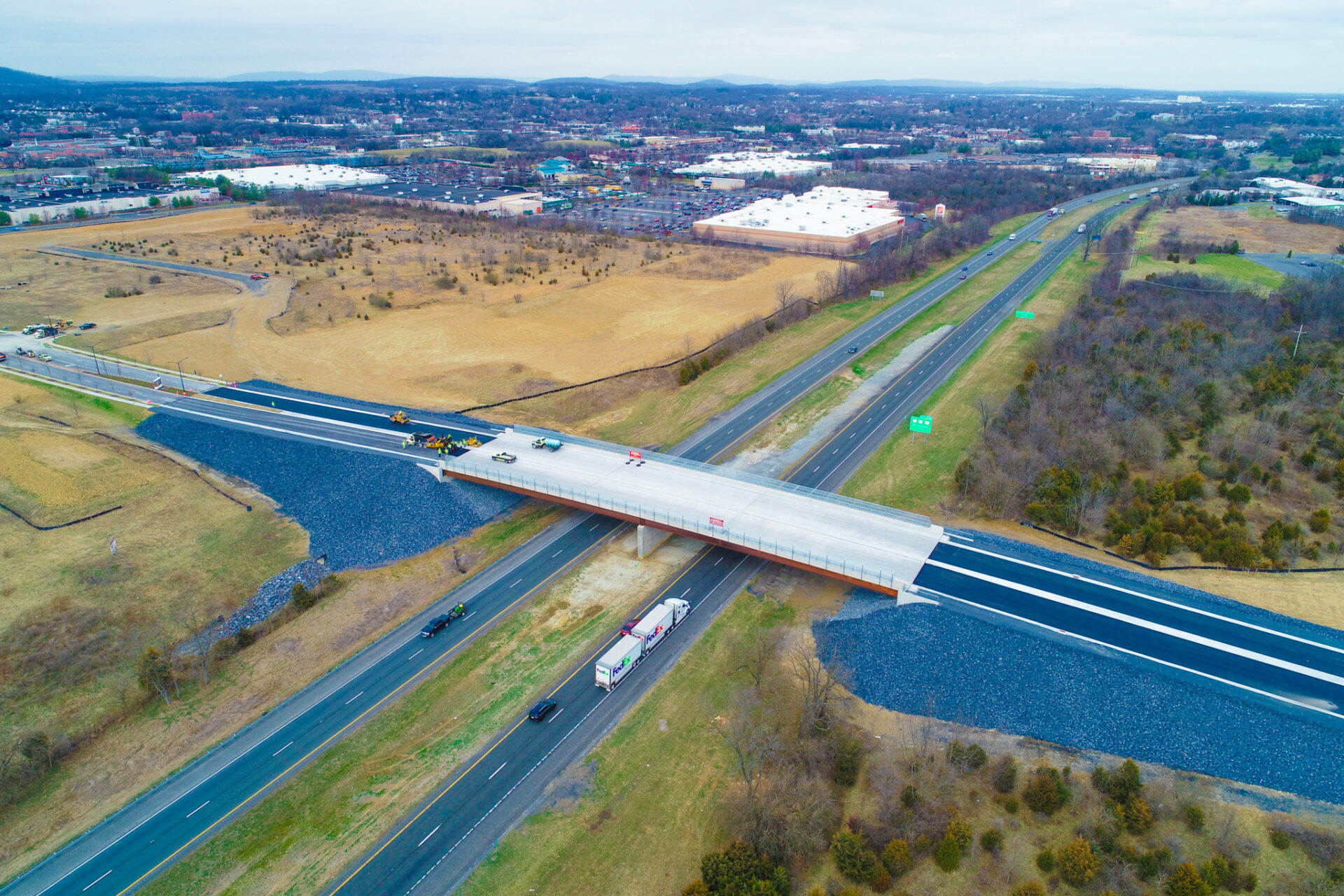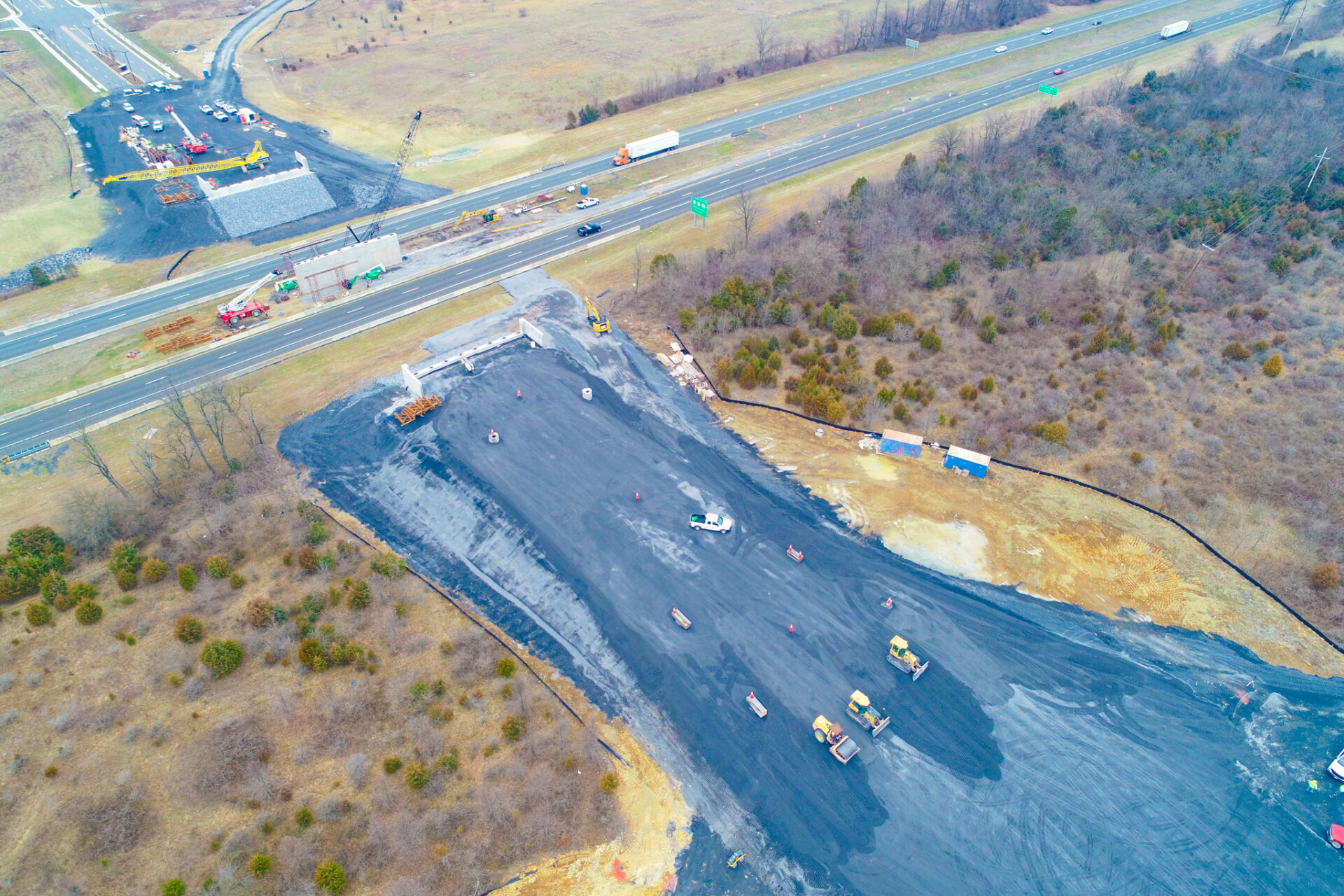The project is a roadway upgrade connecting the east and west halves of the southern part of the City of Winchester which were divided by Interstate 81. Tevis Street is on the western half of the city and has an east to west alignment.
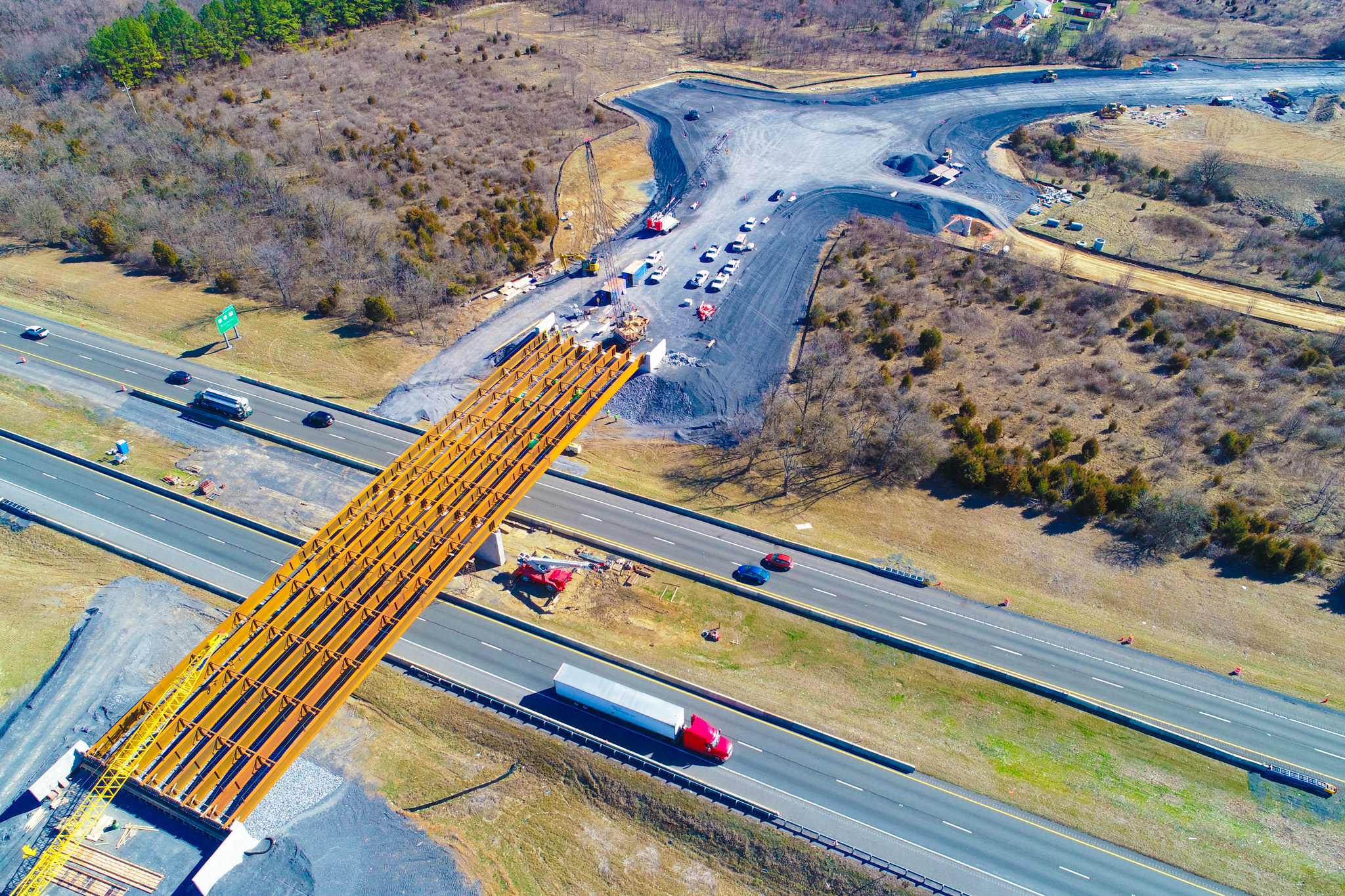
Summary Scope of Work. This existing Tevis Street was extended to the east half of the city, bridging the interstate creating a grade separated overpass. Additionally, three other roadways were enhanced and connected to Tevis Street with a roundabout as the focal point of the unification. Upon completion of construction, the bridge was transferred to VDOT so the bridge was designed per VDOT specifications by Clark Nexsen with all interim submittals provided to the Staunton District for review. Clark Nexsen evaluated several bridge alternatives to ensure the new bridge would accommodate possible future widening of Interstate 81 which drove selection of span lengths. Focus remained on optimizing the economics with special attention to efficiency of material, constructability and future maintenance costs.
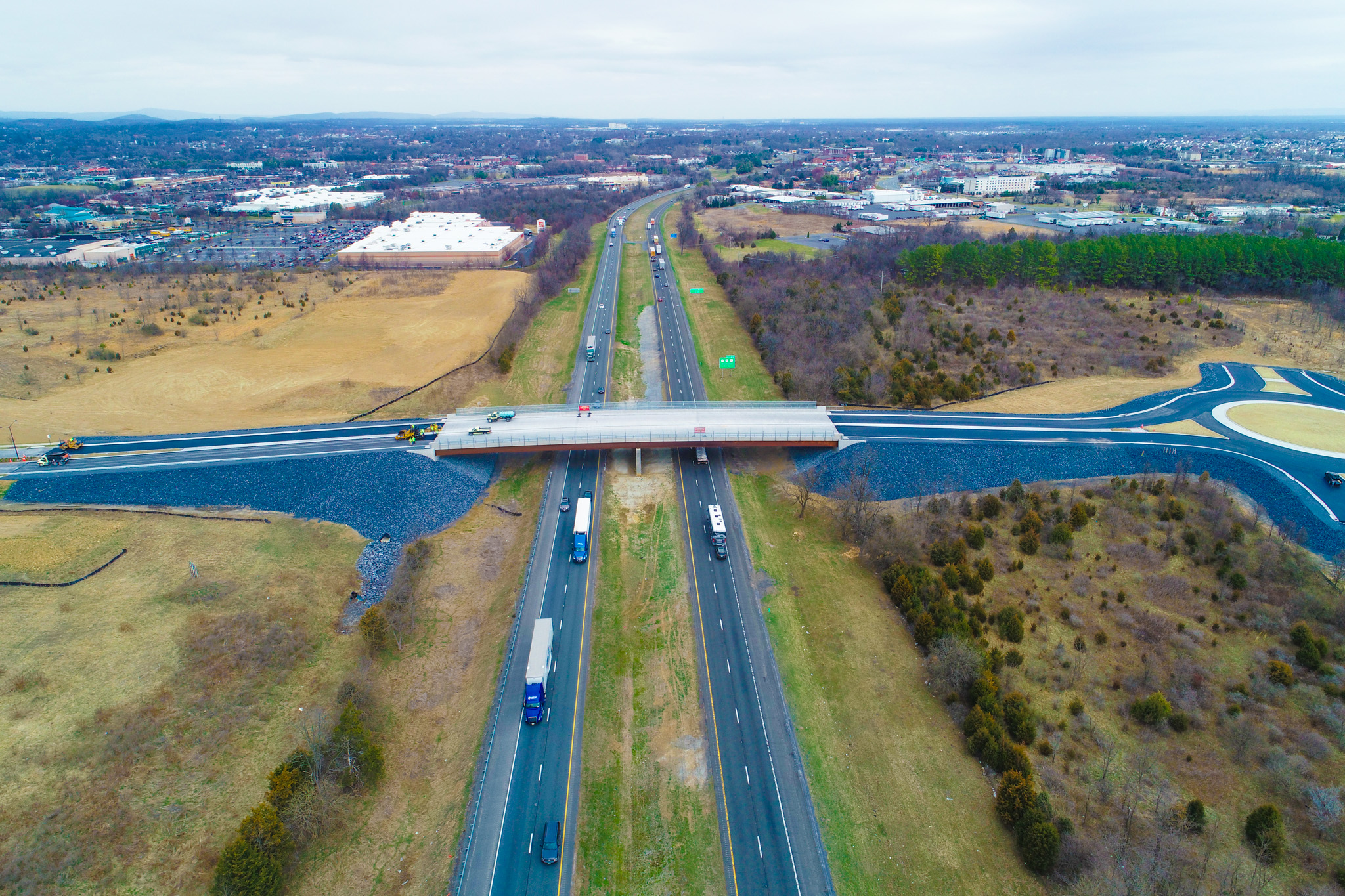
Design Approach. The construction site constraints were evaluated with consideration for viable locations to position cranes with respect to anticipated weight of the bridge girders. Future maintenance costs were approached with the awareness that concrete is more durable than steel, but the higher steel life-cycle cost is overcome by savings during erection of much lighter weight steel girders as compared to concrete beams. Ultimately, the County approved our recommendation for a two span (161’-161’) continuous steel plate girder jointless bridge supported on semi- integral abutments and multi-column pier with crash wall. The bridge section consisted of four traffic lanes, two 6’ sidewalks, and a 4’ median. With the bridge over the interstate, we worked closely with the roadway engineers to ensure adequate clearances and geometric alignments were achieved.
Challenges Overcome. One challenging aspect of this project was achieving adequate vertical clearance over Interstate 81, to include possible future widening. The roundabout is relatively close to the bridge abutment and as such, the approach roadway would have a significant slope. Clark Nexsen fine-tuned our bridge design through various iterations to minimize the structure depth, thereby softening the slope and still maintaining an efficient design. After coordination with the roadway designer the slope was reduced to 5% between the bridge and the roundabout with proper and adequate clearance over the interstate.
Another challenge was related to the Karst geology present at the location of the proposed pier footing. Clark Nexsen coordinated design decisions with geotechnical experts, advising them to extend borings to adequate depth through rock coring. We further advised to take an increased number of borings, which validated our expectation of various voids and clay seams. By hand-graphing the layout of the Karst geology through advanced interpolation of boring logs along the project site lines, our engineers developed a model of the rock and soils to apply to the foundation design to greatly reduce the overall cost of the project by selection of a spread footing on rock base, minimizing rock excavation, and minimizing over- excavation.
